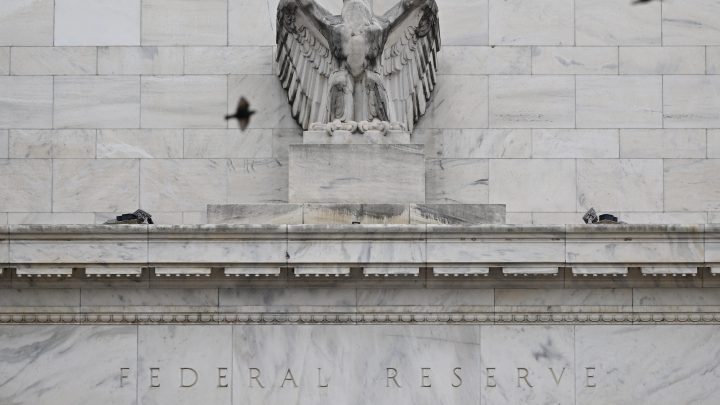
The Fed’s Beige Book offers a more colorful look behind the stats
The Fed’s Beige Book offers a more colorful look behind the stats

We are economic nerds here at Marketplace, certified federal Reserve fan-followers, so we get pretty excited when the Fed releases its Beige Book. That publication comes out eight times a year, two weeks before each meeting of the central bank’s monetary policymaking committee. The latest one came out Wednesday.
The Beige Book has reports on economic conditions from the Fed’s 12 regional banks, with comments from community bankers, real estate brokers, farm-implement suppliers — you name it.
And here’s a tidbit for your next econ-nerd trivia night: It’s called the Beige Book because … the cover is beige. It used to be red — and for internal eyes only — until 1983, when the Fed started releasing it to the public and changed the color to make it less conspicuous, so it wouldn’t be taken as a preview of what the Fed’s about to do at its next meeting.
Beige, yeah. Boring? Not so much.
The Beige Book paints a picture of how the national economy’s doing through local eyes. Here’s a snapshot from economist Charles Gascon, the guy who writes the report for St. Louis, part of Fed District 8: “The middle of the country, the heartland so-to-speak, at a 10,000-foot view, we continue to see increases in economic growth, but probably at a slower pace.”
Moving east for another snapshot, there’s Michael Gritton, who runs KentuckianaWorks, the workforce development agency for the Louisville region, also in Fed District 8. It’s home to major operations for UPS, Ford and General Electric.
“This economy is about as good as you could hope for it to be. I mean unemployment is below 4% across our region. We’re a manufacturing and logistics place, both of those businesses are still thriving,” he said.
Farther south and east, Sean Snaith directs the Institute for Economic Forecasting at the University of Central Florida.
“Many were certain that there would be a recession,” he said. “There’s nothing resembling a recession right now happening in Florida, quite the opposite.”
Tourism is strong across the region, which is Fed District 6. Consumers, though, are stretched.
“We’re expecting some slowing in Florida’s economy because of the erosion of household budgets. But the strength in the labor market is allowing people to at least come up and get their head above water,” Snaith said.
There’s less evidence of labor shortages across the country, according to the Beige Book. Gritton’s seeing that in Louisville.
“We are not getting the kind of frantic phone calls that we were getting in 2022, where employers were really desperate,” he said.
One worrisome development: A huge health care employer is vacating its 27-story downtown headquarters. “That’s a big psychological blow,” Gritton said.
It’s a problem in a lot of places, said the St. Louis Fed’s Charles Gascon.
“There’s definitely challenges in office space and we’re hearing that from a lot of contacts, and malls have been a challenge over the last decade,” he said.
Though he says smaller retail space seems to be doing fine.
There’s a lot happening in the world. Through it all, Marketplace is here for you.
You rely on Marketplace to break down the world’s events and tell you how it affects you in a fact-based, approachable way. We rely on your financial support to keep making that possible.
Your donation today powers the independent journalism that you rely on. For just $5/month, you can help sustain Marketplace so we can keep reporting on the things that matter to you.











